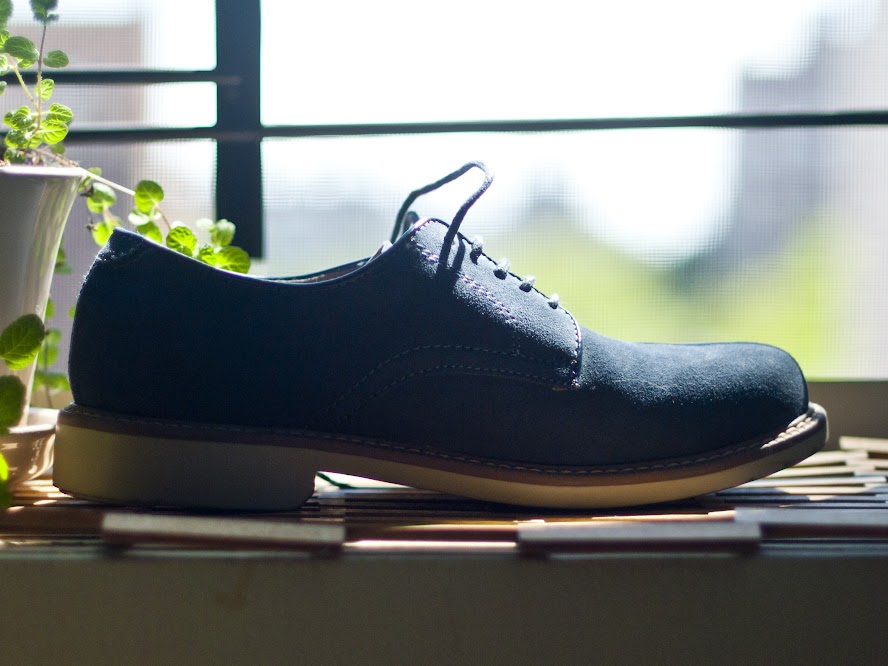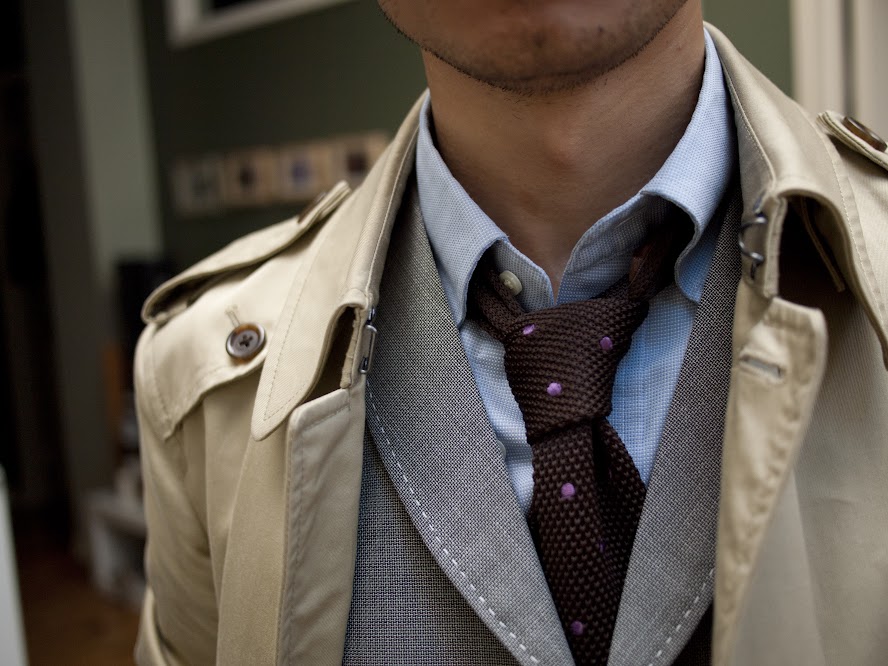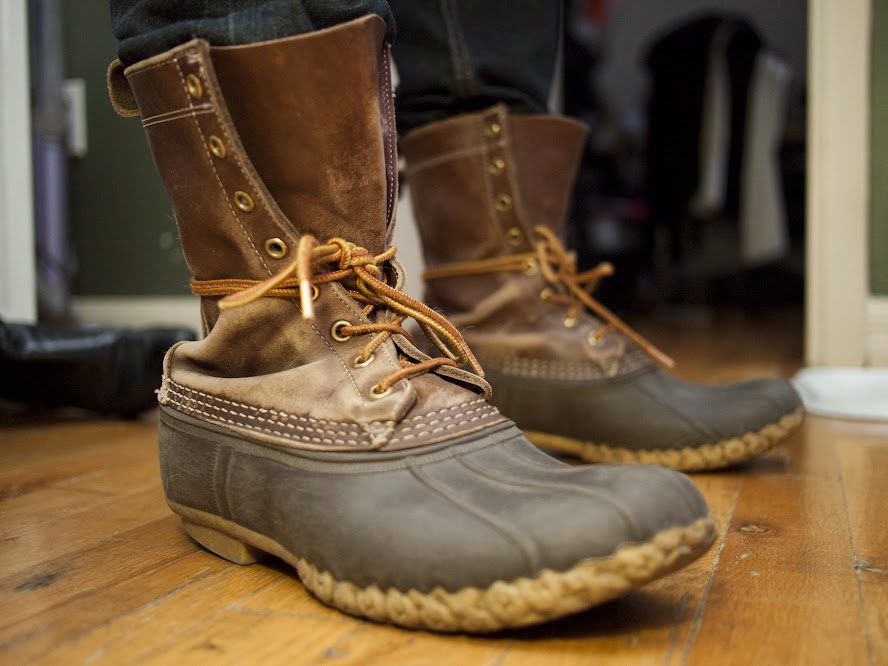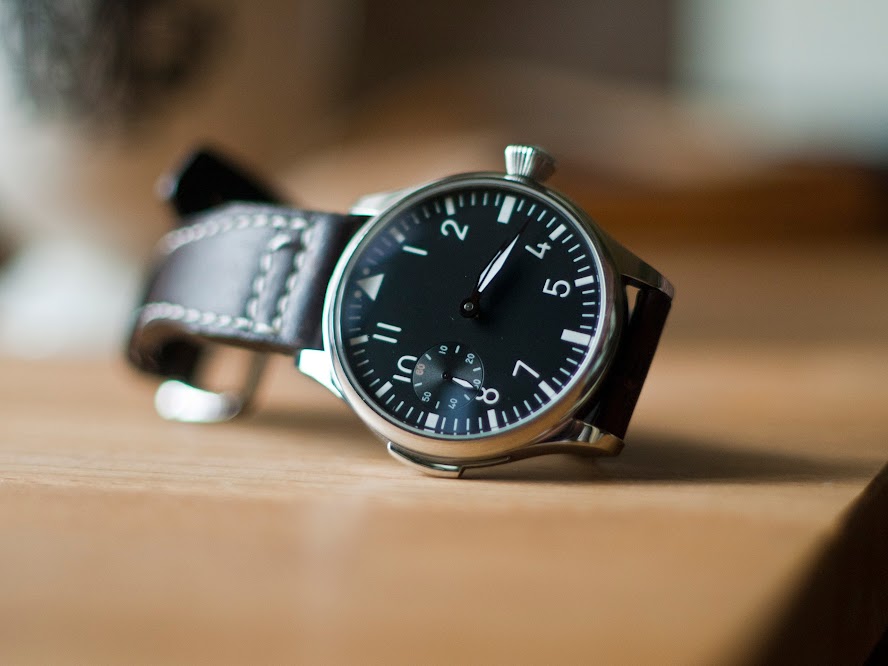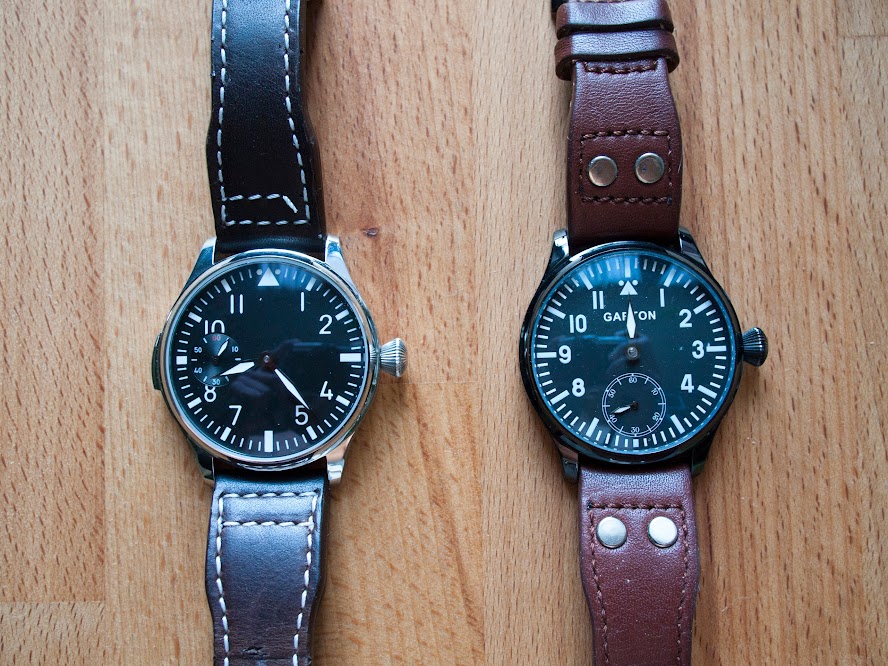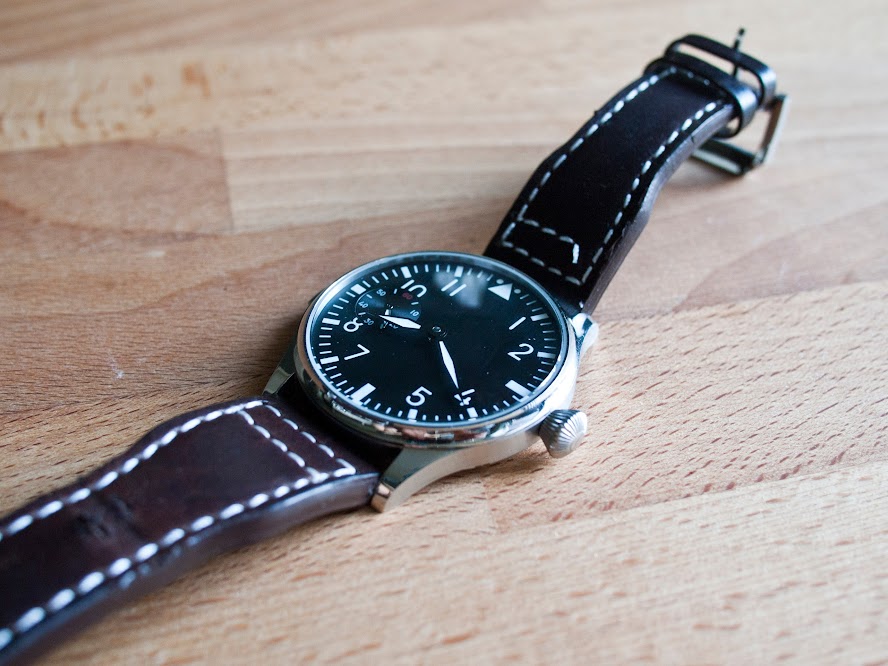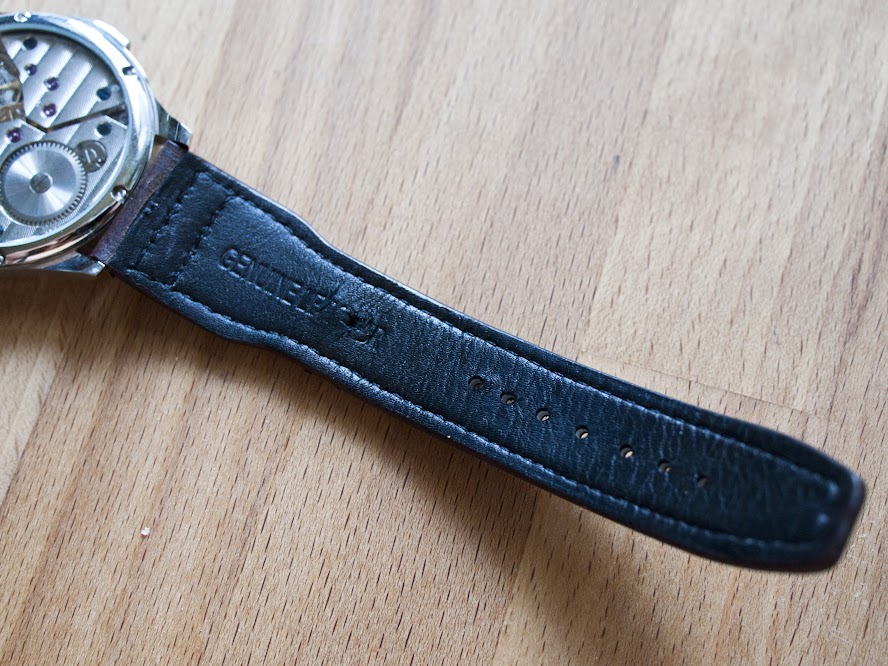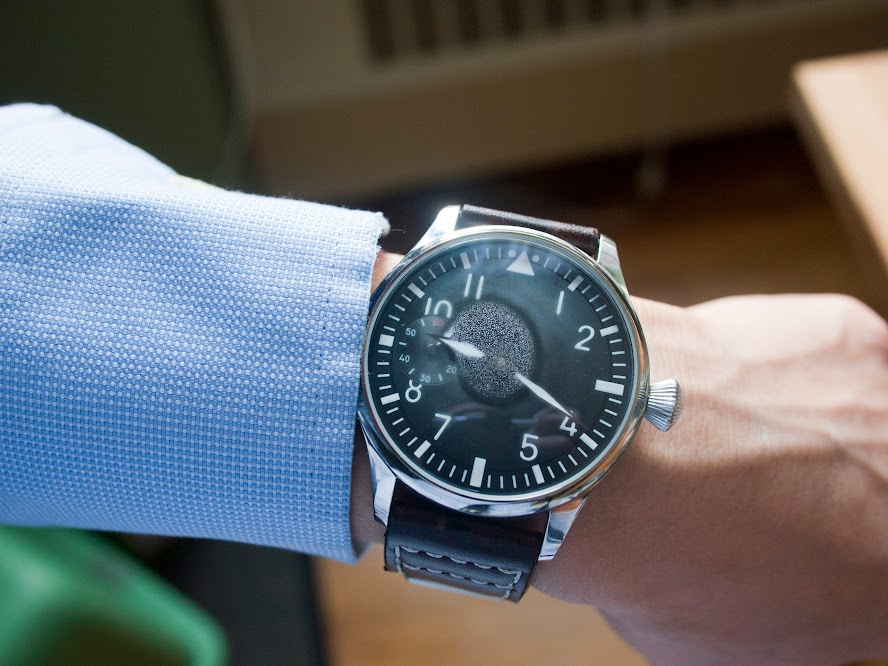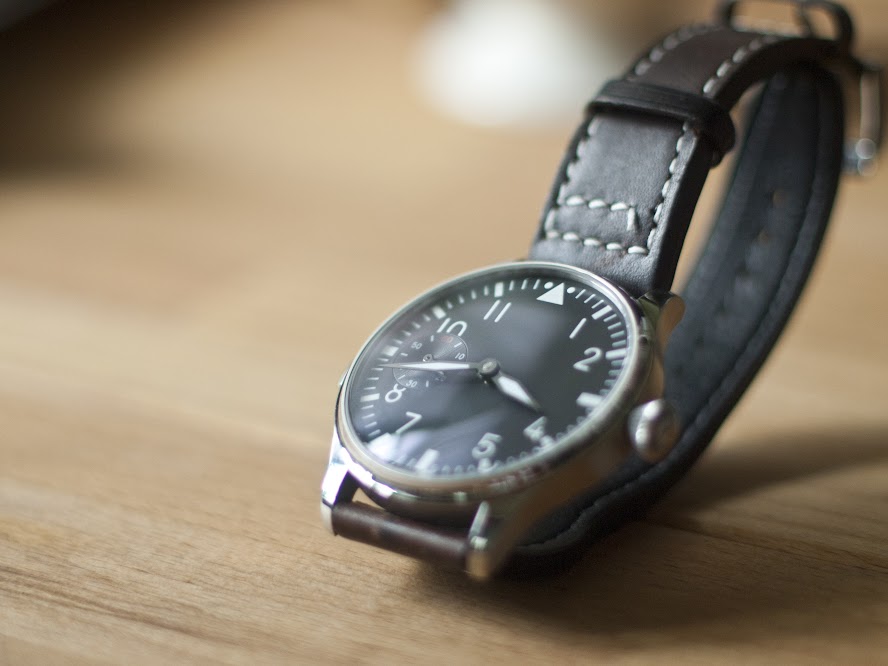My new favorite watch is my old one
I just got a springbar tool from Amazon, and I think it’s the best nine bucks I’ve spent in a while. Why? Because it lets me do this:
Blue Nubuck Shoes by Bass
I’ve got a thing for navy shoes in the warmer months — they’re versatile like brown shoes, but bring a more vibrant contrast to already brown-hued khaki pants. My fiancee recently turned me to Bass, a 136-year-old Maine-based company I’d known solely for the loafers of my parent’s generation, as an affordable source for this shoe. After getting these, it’s clear that I didn’t pay enough attention to the company over the years.
Trying Out Knit Ties
Been yearning to do neckwear outside of the usual business, formal, and Halloween situations, and I finally decided to give it an earnest shot this Spring starting with my very first silk knit ties. I bought two from one of my favorite sources for accessory experimentation: stores.com">Century 21 in the Financial District.
Seemingly always overrun by tourists, Century 21 can be overwhelming and is often hit-or-miss. But it’s great for cheap experiments in accessorizing, such as for ties and pocket squares. The one I’m trying here is by a company I’d never heard of before called Burma Bibas, and costed around $10. I also got a black and purple (goth colors, my fiancee notes) horizontal striped Ralph Lauren for around $17.
Since this was during one of the more precipitous days in recent weeks (April flowers brought May showers in NYC), I’m also donning a Uniqlo mac coat and my favorite rain boots from L.L. Bean:
Parnis Pilot’s Watch
Parnis is a Chinese mechanical watch maker specializing in homages to popular styles. The ones that drew my attention are their “pilot”-styled hand-winding watches. I just recently got one — unbranded, with the seconds subdial at the 9-o-clock — and it’s pretty great.
I love mechanical watches. Despite being significantly less accurate than pretty much every other watch technology since the 1950s (like quartz), there’s something beautiful and elegant in the tiny gears and springs of mechanical movements, which also never need batteries. My first mechanical watch is a diver: the Hamilton Khaki Navy GMT. It’s an automatic with screw-down crowns — robust, heavy, beautiful, and complicated with several rotating bezels. In looking for a second watch, I wanted something simpler and more elegant.
I’m drawn to pilot watches for the same reasons early 20th-century pilots found them appealing: because of the legibility of the heavy white sans-serif numerals on large black dials. And in making my rounds of watch forums and blogs, I came across Chinese watchmakers like Parnis doing them on the cheap.
This is actually my second Chinese hand-wound watch. I previously bought a Garton pilot watch that I also really loved. But one day, I made the poor decision of letting it get near-soaking wet. The dial casement popped off not long after, and then the movement just plain stopped working. I could have gotten it repaired, but it would have costed better than 50% of the original sub-$100 cost. These are not water-resistant watches, which is definitely worth keeping in mind.
Finally, months after the Garton broke, I ordered the “44mm Black Dial Special@9 White Number Asian 6497,” (whew) which I picked mostly because I loved the typography and the red “60” on the seconds subdial. Manbushijie.com (heavily endorsed by forums as one of the most reliable Chinese watch sources) lists it at $86, but once I registered, prices all across the site dropped by about a quarter, and I was able to nab this one at $69 including shipping from China. A little weird, since I’m pretty sure registration is required to order anything. Anyway, about three weeks later, the watch arrived flat in a padded envelope and swathed in bubble wrap.
The first thing I noticed after I unwrapped the “Special@9” is how large the dial seems. It’s the same 44mm as the Garton I got before it, but the numbers and minute markers are a hair lighter weight. Also, the markers are about a millimeter shorter, placing the numerals at a wider radius. Combined with the lack of any branding, there’s a lot more whitespace (or blackspace) than the Garton. This also makes the dial feel cleaner and more elegant, but it feels a tad oversized on my sub-7” wrist. If everything were drawn in by around two millimeters, it would be perfect.
That said, the numerals are clean and lovely, and I’m particularly fond of the seconds subdial. It’s got radial ridges, like a vinyl record, that give it a sort of metallic gleam when light hits it. The seconds numerals are set in the same typeface as the minutes (unlike the Garton, which used a serif face and looked a bit awkward), and the subdial itself feels cleanly placed, cropping the 10 and 8 at the 9-o-clock position.
The case is simple stainless steel, polished on top and bottom, and brushed along the sides. On the 9-o-clock side of the case, opposite the crown, its got a simple art-deco-ish ornamentation that on the one hand is completely inoffensive but on the other sort of breaks the minimalism of the dead-simple case. It’s also got a transparent glass caseback that displays the movement — a pretty 6497 clone with some blue screws, pink rubies, and engraved metal.
Like many pilot watches (and the Garton before it), the Special@9 has a huge diamond-shaped crown that winds the power spring when turned clockwise. Pull the crown out, and the time can be set by turning in either direction. The seconds do not stop when the crown is pulled (a concept known as “hacking,” making it easier synchronize); usually, I try to hold the minute hand exactly on a minute marker before pushing the crown back to help ensure the hands are in sync.
One thing of note, which is also common amongst these Chinese mechanicals, is that the movement is quite loud. Imagine the signature sound of the 60 Minutes clock audible from a foot away in relative quiet. I actually like the noise, but my fianceé isn’t into it; if we’re sitting next to each other, and I’m leaning my head in my left hand (not an unusual posture for anyone), then she can hear and is quite distracted by the sound of the rotor in action. Whereas for me, after regular wear for the past few weeks, the ticking has become pleasant white noise.
Also like many pilot watches, the numerals, hands, and markers are coated in luminous paint. It’s a standard green, like that used on my Hamilton, but not as immediately bright. For me, the important part of lume is duration, and the Garton excelled at this; I would be able to read the watch late into a two-hour movie at a theater, which is far longer than the Hamilton. This Parnis, however, doesn’t seem to have the same duration as the Garton. The Garton also uses blue lume, as opposed to the green on the Hamilton and Parnis, which could be a factor. I suppose I just need to watch more interesting movies when wearing the Special@9.
One of the unsurprising downsides of cheap watches like those from Parnis and Garton is the strap, which is wholly unremarkable, stiff leather. I actually prefer the strap of the Garton, which is thinner and more pliable than the Special@9. It’s also a nice color — a reddish brown that contrasts well with the charcoal colored Garton case. At a distance, the thick and dark brown strap of the Special@9, with its white contrast stitching, seems fine next to the polished stainless steel case — it actually looks rather classic. Spending a minute to look closer, though, and it looks and feels plasticky. Still, with regular wearing, the strap becomes softer, and I’ve warmed to it enough that I’m not clamoring to replace it with something nicer. Also, since it’s so cheap, I didn’t feel the least bit squeamish about taking a razor to it to dig out a new hole to accommodate my thin wrist (which I also did with the Garton, which has an even longer strap).
After about a month of wearing, the watch has become a comfortable wrist presence. I didn’t realize how much I’d missed cranking a manual movement, and like the Garton before it, I never let the spring run out. The movement runs fast — I didn’t measure the divergence precisely since I never cared for ultra-precise timekeeping (if I did, I wouldn’t be into mechanical watches), but it’s maybe something like a minute gained a week. Thanks to the simplicity of the watch, it’s no problem readjusting once a week or so. In fact, it’s probably indirectly helped me be early to appointments.
Something I was harshly reminded of one morning is the lack of weatherproofing. On a particularly humid day recently, I awoke to condensation on the inside of the watch. The lack of any kind of gasket-like seal means that moisture can easily sneak in, and if not removed promptly can cause corrosion of the tiny metal parts. Normally, this means a trip to the watch repairer; but, since the Special@9 isn’t very sealed, I pulled out the crown, put it in a bag with uncooked rice overnight, and the next morning the condensation was gone.
I have several nitpicks with the Special@9 compared to the Garton that preceded it — the lighter weight numerals and markers and lack of branding make the dial seemed oversized, and the lume is unimpressive, as is the strap. But it’s readable and cleanly designed — exemplary of the pilot watch style. It’s accurate enough for my tastes, the movement is beautiful and fun to wind, and at $70 shipped, it’s a great value. I think I’ll dress it up in the future with new hands and a strap, but even in its out-of-the-envelope state, it’s totally fine. I’ll be shopping Parnis again in the future, for sure.

